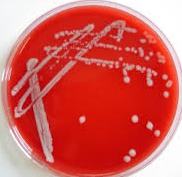Mutation is a change in the genetic make-up (or DNA) of an organism.It is an inheritable alteration in the nucleotide sequence (or genome base sequence) of a living organism. Mutation can occur in both plant and animal cells, and it can be spontaneous (i.e. natural), prompted (or artificial), or adaptive in nature. When mutation occurs, there is usually a restructuring in the base sequence of the genome of an organism; and this alteration in DNA can lead to a change in its activity.
The chemical and physical environment of an organism (e.g. bacteria) can be manipulated using mutagens, and this can lead to multiple mutations or increase in the frequency of mutations occurring in the organism. Such manipulations can be for a specific purpose (e.g. to increase the production of a gene product of interest). In other cases, mutation can occur as an occasional error in the genome of a bacterium; and in such scenario, mutation can occur to the benefit of the organism such as making it to be antibiotic resistant (i.e. when there are alterations in the genes encoding antibiotic targets on the genome of the bacterial cell).
Agents that cause mutation in an organism’s genome are generally referred to as mutagens. Mutagens can be a biological, physical or chemical agent that increases the rate of mutation in an organism, and some examples of mutagens included radioactive substances, ethidium bromide, ultraviolet rays, acridines, nitrous acid and ionizing radiations of X-rays. A mutant is an organism whose genetic make-up (or genome) has been altered. Mutants are organisms that carry a modified genome nucleotide sequence.
The observable (or physical) properties of the mutant are called phenotype while the genotype has to do with the change in the base sequence of the organism’s genome. Normally, the phenotype of an organism is designated by a capital letter followed by two lower case letters with either a minus (—) or plus (+) superscript sign that shows the absence (—) or presence (+) of the trait (i.e. characteristic phenotype). For example F+ plasmid bacteria can successfully carryout conjugation while an F— plasmid cannot.
The genotype of an organism is usually designated by three lowercase letters followed by a capital letter, and which are all in italics. These letters specifies a particular gene in the organism. For example, the gene responsible for histidine production (an amino acid) in a bacterium (e.g. Escherichia coli) is designated as hisC. The gene hisC encodes the protein HisC which functions in the biosynthesis of histidine (His) in a bacterium.
TYPES OF MUTATION
There are basically two types of mutation viz: spontaneous mutation and induced mutation.
Spontaneous mutation
A spontaneous mutation is a mutation that occurs on its own in an organism without the support of a mutagen. It occurs naturally and occasionally in a microorganism and usually in the absence of any added chemical or physical mutagen. Spontaneous mutations usually occur in microorganisms following mistake or error in the base pairing of nucleotides during DNA replication. Such errors or substitution in the base-pair sequence of an organism’s genome affects the gene and the product that the gene encodes.
Spontaneous mutation can be beneficial to a microorganism, for example a spontaneous mutation that occurs in the DNA of a bacterium. Such alteration in DNA can cause a change in the gene product (which is usually the target of an antibiotic). When a susceptible bacterium comes into contact with a therapeutic concentration of an antibiotic (e.g. fluoroquinolones which targets the DNA of a bacterial cell), the antibiotic binds to a specific site on the bacterium’s DNA in order to unleash its antimicrobial efficacy.
For fluoroquinolones (which are bacterial DNA replication inhibitors), the antibiotic binds to the active site of DNA gyrase or topoisomerase II (which is the enzyme responsible for DNA replication in a bacterial cell); and this stops DNA replication in the organism, thus leading to cell death. But when spontaneous mutation occurs in specific areas of the genes encoding the DNA gyrase, fluoroquinolones can no longer bind efficiently, thus its antimicrobial potential will not be released.
In such scenario, bacterial DNA replication will continue unperturbed, and the bacterium will not be affected by the fluoroquinolones directed towards it.
Substitutions in the base-pair sequence of an organism’s genome can result to some untoward effects in the organism and this includes:
- Missense mutation: This is a mutation that results in the formation of a faulty protein following the alteration of a single codon during DNA replication. It occurs when an amino acid sequence that codes for a protein is automatically replaced by a different amino acid, thus resulting in the formation of a faulty or dysfunctional protein.
- Silent mutation: This is a mutation that has no effect on the phenotype (or physical appearance) of an organism. It usually results in the formation of a normal protein. The reason for this is because the alteration in base sequence due to silent mutation more or less always occurs in the third base of the codon, though there can be some exceptions. A codon is defined as a sequence of three bases in mRNA (messenger ribonucleic acid) that encodes a specific amino acid.
- Nonsense mutation: This is a mutation that occurs when the codon for an amino acid is automatically changed to a nonsense (stop) codon. Stop codons are codons that signal the end or termination of the translation process of a protein synthesis coding sequence on the mRNA. Examples of stop codons include: UAA, UAG, and UGA. Nonsense mutation results in the formation of an incomplete protein (which will normally be nonfunctional). In nonsense mutation, there is an early or premature end of translation, a process responsible for the production of proteins in the ribosome of an organism using the genetic information in mRNA as a template.
- Point mutation: Point mutation is a mutation that changes the base-pair of a codon. It is caused by the loss or gain of a single base-pair or as a result of amino acid substitutions in a base-pair. Point mutations can lead to a single amino acid change in the polypeptide of a protein; but they usually do no result in any change at all in the resultant polypeptide depending on the affected codon.
Induced mutation
Induced mutations are mutations caused by mutagens (including biological, chemical or physical agents). It is an alteration in the genetic make-up of an organism that is deliberately undertaken for a specific or given purpose. Induced mutations have applications in genetic studies, biotechnology, medical sciences, nanotechnology, and molecular biology, genetic engineering amongst others. Through induced mutations, mutants of microorganisms including bacteria and viruses have been produced in the laboratory through the careful and deliberate manipulation of their DNA (or genome), and this has resulted to the production of specific products of interest.
References
Alberts B, Lewis J, Raff M, Johnson A and Roberts K (2002). Molecular Biology of the Cell. Taylor and Francis, Inc, London, UK.
Das H.K (2008). Textbook of Biotechnology. Third edition. Wiley-India ltd., New Delhi, India.
Dictionary of Microbiology and Molecular Biology, 3rd Edition. Paul Singleton and Diana Sainsbury. 2006, John Wiley & Sons Ltd. Canada.
Friedberg EC, Walker GC and Siede WM (1995). DNA Repair and Mutagenesis. Washington, DC, USA: ASM Press.
Lederberg J (editor): Encyclopedia of Microbiology, 4 vols. Academic Press, 1992.
Lodish H, Berk A, Matsudaira P, Kaiser C.A, Kreiger M, Scott M.P, Zipursky S.L and Darnell J (2004). Molecular Cell Biology. Fifth edition. Scientific American Books, Freeman, New York, USA.
Madigan M.T., Martinko J.M., Dunlap P.V and Clark D.P (2009). Brock Biology of Microorganisms, 12th edition. Pearson Benjamin Cummings Inc, USA.
Nelson, David L.; Cox, Michael M. (2005). Lehninger Principles of Biochemistry (4th ed.). New York: W.H. Freeman.
Singleton P and Sainsbury D (1995). Dictionary of microbiology and molecular biology, 3d ed. New York: John Wiley and Sons.
Talaro, Kathleen P (2005). Foundations in Microbiology. 5th edition. McGraw-Hill Companies Inc., New York, USA.
Tamarin Robert H (2002). Principles of Genetics. Seventh edition. Tata McGraw-Hill Publishing Co Ltd, Delhi.
Twyman R.M (1998). Advanced Molecular Biology: A Concise Reference. Bios Scientific Publishers. Oxford, UK.
Weaver R.F (2005). Molecular Biology. Third edition. McGraw-Hill Publishers, USA.
Discover more from Microbiology Class
Subscribe to get the latest posts sent to your email.





